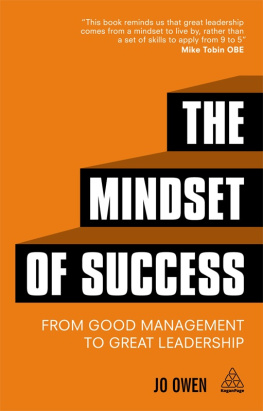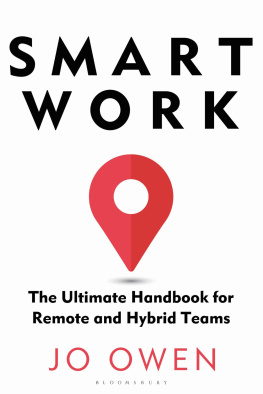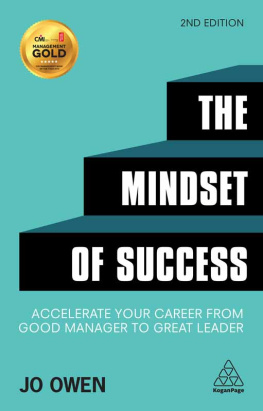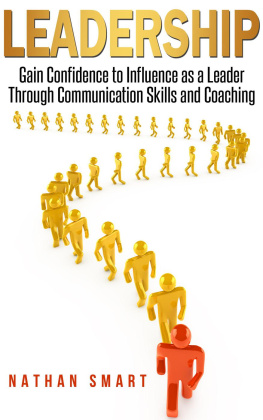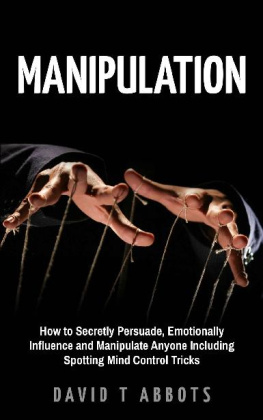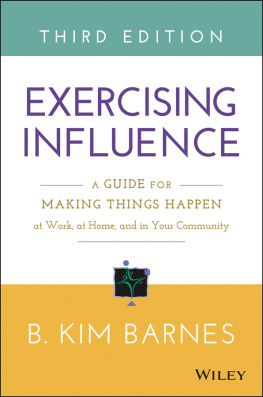

Copyright Jo Owen 2012
Licensed for sale in USA and its dependencies only; American Samoa, Guam, Northern Marina Islands, Puerto Rico and US Virgin Islands and Canada.
This edition of HOW TO INFLUENCE AND PERSUADE 02 Edition is published by arrangement with Pearson Education Limited.
First Skyhorse Publishing edition copyright 2014 by Jo Owen
All Rights Reserved. No part of this book may be reproduced in any manner without the express written consent of the publisher, except in the case of brief excerpts in critical reviews or articles. All inquiries should be addressed to Skyhorse Publishing, 307 West 36th Street, 11th Floor, New York, NY 10018.
Skyhorse Publishing books may be purchased in bulk at special discounts for sales promotion, corporate gifts, fund-raising, or educational purposes. Special editions can also be created to specifications. For details, contact the Special Sales Department, Skyhorse Publishing, 307 West 36th Street, 11th Floor, New York, NY 10018 or info@skyhorsepublishing.com.
Skyhorse and Skyhorse Publishing are registered trademarks of Skyhorse Publishing,Inc., a Delaware corporation.
www.skyhorsepublishing.com
10 9 8 7 6 5 4 3 2 1
eISBN: 978-1-62873-875-9
Library of Congress Cataloging-in-Publication Data is available on file.
ISBN: 978-1-62636-414-1
Printed in the United States of America
Contents
Influence and persuade: the skills index
Introduction
I was Mr Zest and in the next cubicle sat Mr Fairy. I was responsible for Zest (a toilet soap). He was responsible for a competitor: Fairy Toilet Soap. On balance, I preferred to be Mr Zest than Mr Fairy. Suddenly, the CEO appeared by our cubicles: he was on walkabout. He asked me how things were going. I muttered something about the weather. He moved on to Mr Fairy and asked the same question.
Jurgen, said Mr Fairy, I would really like your advice on this new promotion we are developing... The CEO was delighted. He had started his career in marketing. This was his chance to show that he had lost none of his marketing skills. Fifteen minutes later Jurgen left with a big smile on his face: he had just proven he still had the right stuff. Mr Fairy also had a big smile. He had just got the CEOs support for a controversial new promotion, and had made his name with the big boss. Word quickly spread that the Fairy project was now the CEOs pet project. One week later, all the staff departments had waved Fairys promotion through. One month later, I was still battling with them to gain approval for my far more modest promotion.
It was a classic influencing moment, when power visibly shifts from one person to another. For many years, I was baffled by how some people seemed to ooze influence and get their way effortlessly. Meanwhile, others toil away and achieve far less. Slowly, I found that these moments were not random. There are consistent patterns of success and failure.
In that short exchange with the CEO, Mr Fairy had demonstrated several key influencing techniques:
- He seized the moment.
- He sold his idea by asking for advice: he listened rather than pitching.
- He had acted as a partner to the boss, treating him as a human not just a boss.
- He borrowed the authority of the CEO.
Eventually, I identified ten core skills that all good influencers have. And the good news is that anyone can learn them and become more influential. The result is that you can achieve far more with far less. Influence and persuasion are not nice to have skills. They are must have skills. Managing by command and control is dying. You can no longer just tell people what to do. The days of deference are over. To make things happen, you cannot do it all yourself. There are only 24 hours in a day. You have to enlist the support of colleagues and friends to achieve your dreams. But they have their own dreams and deadlines to think about as well: so how do you gain their support for your needs?
In the past, the job of managers was to make things happen through people they controlled. Managers still have to make things happen through other people, but they no longer control the people they rely on. Influence and persuasion are the core skills of management today.
influence and persuasion are the core skills of management today
Research is useless unless it can be put into practice. Over the last ten years I have been putting the principles of influence into practice, to see if they really work. And they have worked better than I ever dared to dream. If I had been told ten years ago that influence would have let me achieve the following, I would have said it was impossible:
- Setting up six national charities. One, Teach First, is set to be the largest graduate recruiter in the UK by 2013.
- Helping over 250 ex-offenders set up their own, legitimate, businesses. Only one in 25 have re-offended: nationally, two out of three ex-offenders normally land up in prison again.
- Creating a bank, which went on to become HBOS business banking.
- Building a business in Japan over three years, without speaking Japanese.
And when I started I knew nothing about education; I knew nothing about graduate recruitment; I knew nothing about offenders and the justice system. And I certainly knew nothing about banking: some people might argue that the credit crunch shows that top bankers did not know anything about banking either.
All of these things have been achieved with and through other great people. Alone, these dreams would have remained impossible dreams. But with influence and persuasion you can turn your dreams into reality. Because influence means working with others, it means you share the burden. You achieve more, work less.
Influence versus persuasion
This book covers both influence and persuasion. Persuasion is important, but dangerous. If you persuade someone the wrong way, you lose influence. We have all been victims of sales people, colleagues or bosses who use brilliant persuasion techniques to make us do something we later regret. And next time we see that person, we know not to trust them. They can use the tricks of persuasion to fool us once, but we will not be fooled again. This book shows how you can persuade and build influence at the same time: instead of avoiding you, people will want to work with you more. But you must persuade them the right way.
Influencers play for much higher stakes than persuaders. Influencers do not want a one-off success. They want to build commitment which lasts. This means that influencers think and act very differently from persuaders. Persuaders start and finish with their own needs. They want to sell their product or plant their idea in another persons head. Communication tends to be one way: the persuader does most of the talking as he or she extols the virtues of the product or idea they want to push.
Influencers still have goals to achieve, but think differently about how to get there. They see the world through other peoples eyes, and adapt their message and behaviour accordingly. The ideal outcome is not simply to persuade someone: it is to build an alliance of mutual trust and respect. Achieving this is a huge investment of time, effort and skill. But it is an investment which yields rich dividends over a long period.
The differences between influence and persuasion are summarised in the table below:

Next page

